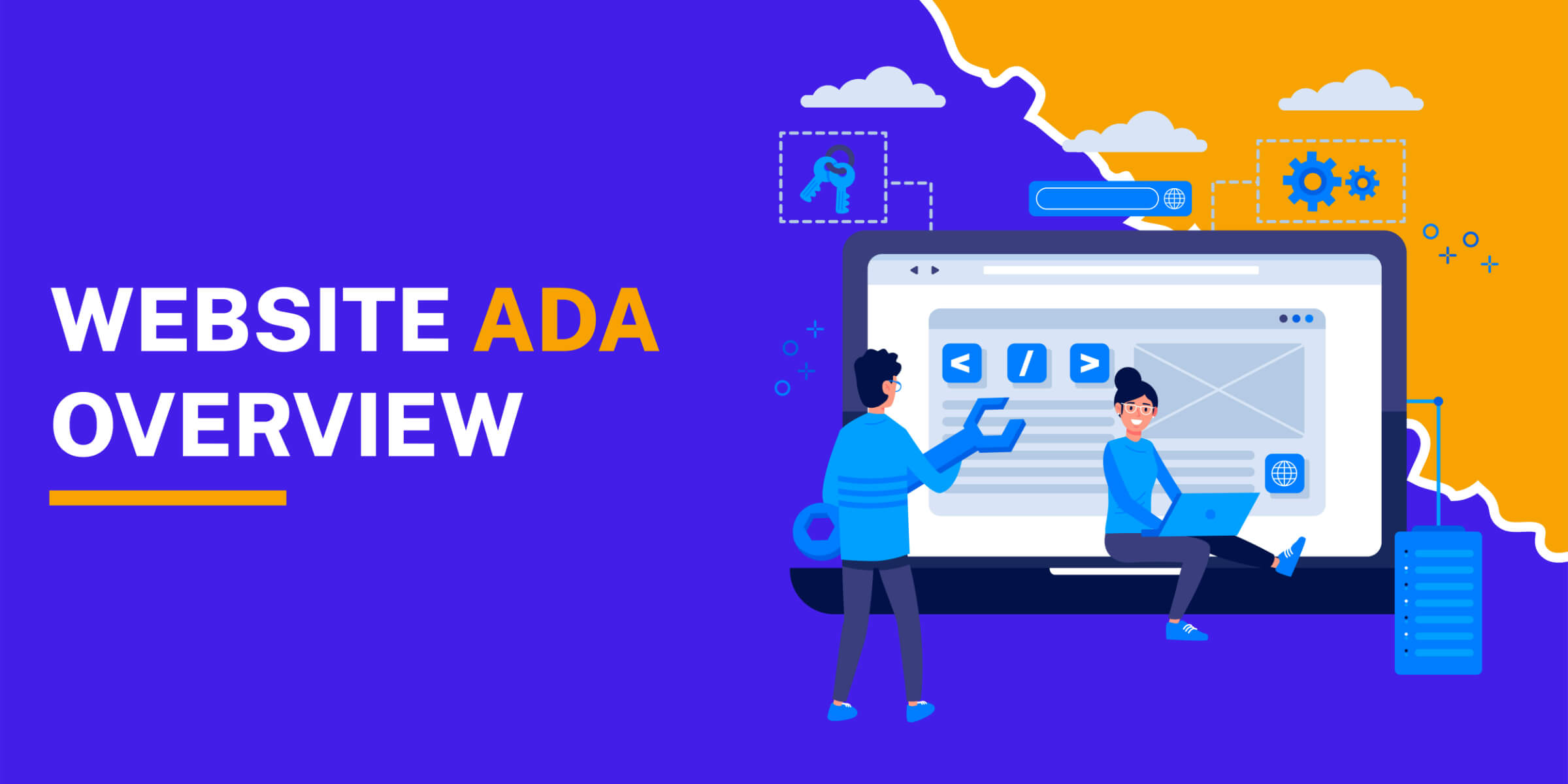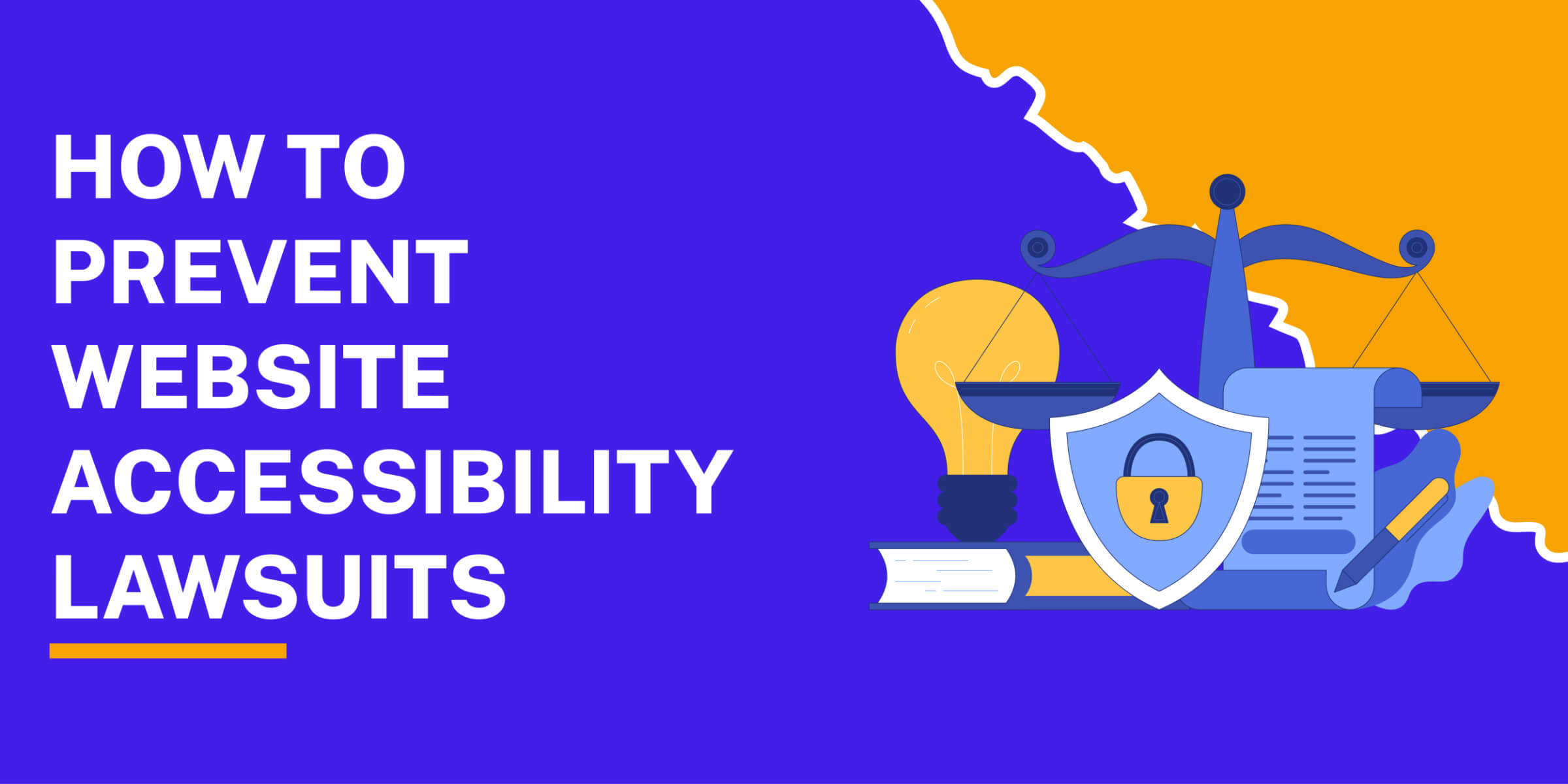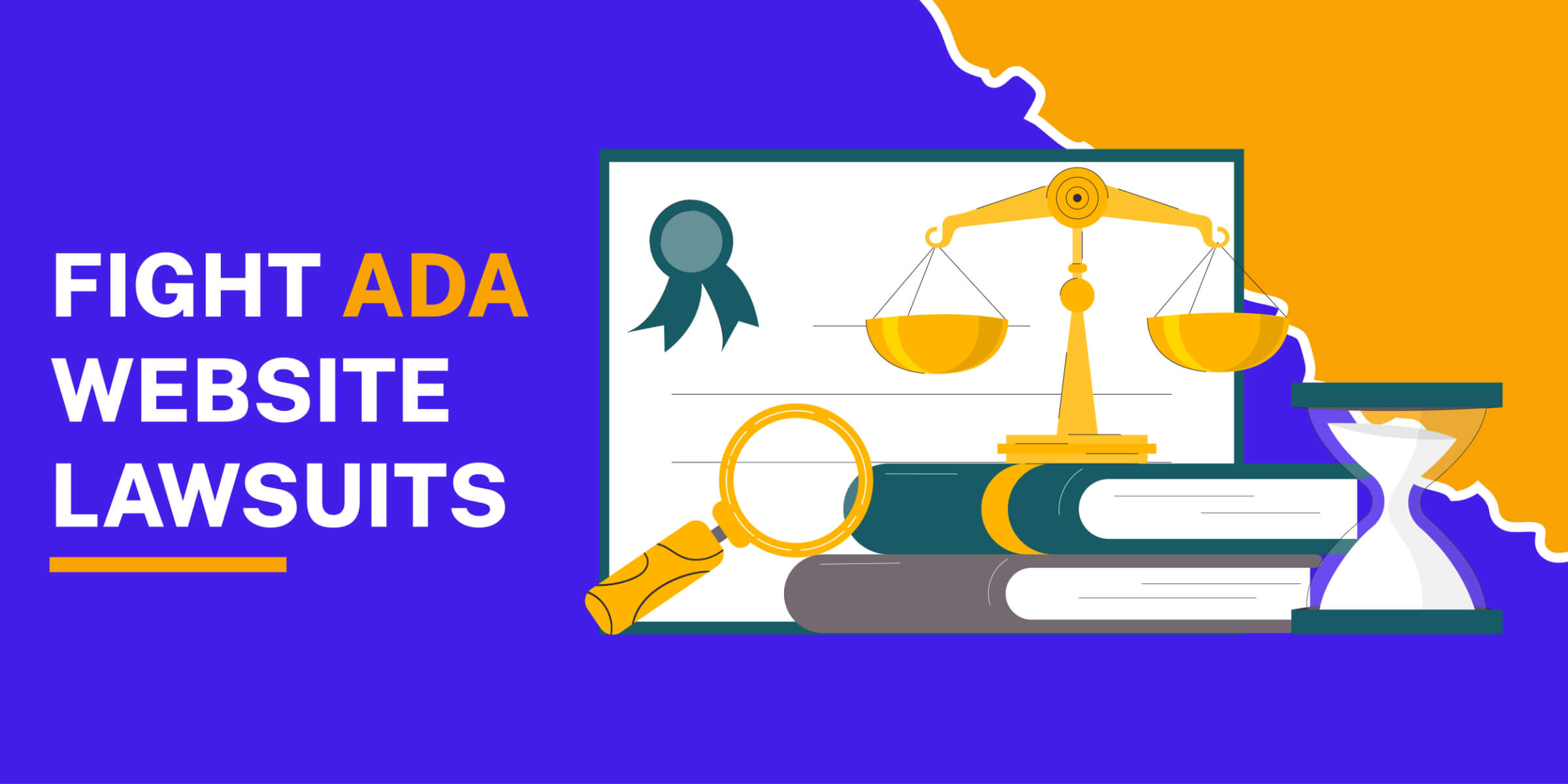Embracing ADA compliance opens your digital doors to everyone, and failure to follow this law can lead to serious consequences.
Are you caught in the crosshairs of an ADA website lawsuit?
Don't sweat it.
Roll up your sleeves and dive into a strategic audit of your site, tweak what's needed, and arm yourself with a savvy legal expert who knows the ADA inside out.
Our Top Recommendation for ADA Compliance
- Make your website ADA-compliant in minutes
- Stay protected with real-time accessibility monitoring
- Save thousands of dollars in development
We offer this website completely free to our visitors. To help pay the bills, we’ll often (but not always) set up affiliate relationships with the top providers after selecting our favorites. However, we do our best not to let this impact our choices. There are plenty of high-paying companies we’ve turned down because we didn’t like their product.
An added benefit of our relationships is that we always try to negotiate exclusive discounts for our visitors.
Key Takeaways
- Adhere to ADA compliance to ensure your website is accessible to all users, and avoid potential lawsuits.
- Perform frequent accessibility audits to identify and address any compliance issues to maintain an inclusive digital environment.
- After auditing, create and execute a plan to rectify identified issues, demonstrating your commitment to accessibility.
- Use UserWay's tools and services to ensure continuous ADA compliance, enhance your website's accessibility, and safeguard against future lawsuits.
Website ADA Overview


Initially enacted in 1990, the ADA is a comprehensive civil rights law prohibiting discrimination based on disability. It ensures that people with disabilities have the same opportunities as everyone else to participate in mainstream life, which includes equal access to digital information and services.
As the internet has become an integral part of daily life, the ADA has been extended to websites. Just like physical spaces, websites must be accessible to individuals with disabilities. They must be able to interact, navigate, and benefit from online content without barriers.
To help website owners achieve accessibility, the Web Content Accessibility Guidelines (WCAG) were developed.
These guidelines provide a framework for making web content more accessible, with recommendations divided into three levels of compliance: A (minimum level), AA (standard level), and AAA (highest level).
Following these guidelines not only helps:
- ADA compliance
- Enhance the user experience for all visitors
- Demonstrate a commitment to inclusivity and equal access in the digital age.
Check out these web accessibility statistics!
How to Prevent Website Accessibility Lawsuits


The best way to prevent website accessibility lawsuits is to create an accessible website and adhere to the ADA requirements.
Some of the key ways to ensure your website is accessible include:
Text Alternatives for Non-Text Content: Provide text labels or descriptions for all non-text content, such as images, videos, and audio files. This ensures that users who rely on screen readers or other assistive technologies can understand what the non-text content is about.
Adaptable Design for Various User Preferences: Design your website so that it can be easily adjusted to meet different user needs and preferences. This includes allowing users to change font sizes, text, and background colors, and to reconfigure the layout.
Adequate Contrast Levels for Readability: Ensure that your website has sufficient contrast between text and background colors to enhance readability. Users with visual impairments, such as low vision or color blindness, find it easier to read content when there is a high contrast level.
Keyboard Functionality and Predictable Navigation: Make sure that your website can be navigated using a keyboard alone. This is essential for users who cannot use a mouse or touch screen.
User Assistance and Media Control: Provide controls for media on your website, such as the ability to pause, stop, or adjust the volume of audio and video content.
Audit Your Website to Ensure Accessibility
Regular website audits for accessibility ensure your site remains inclusive and compliant with ADA standards.
The top reasons to enact regular audits include:
- Identify issues: These audits help identify and rectify any barriers that might prevent users with disabilities from fully accessing your content.
- Stay compliant with changing requirements: By conducting periodic reviews, you can adapt to the latest accessibility guidelines, as these standards evolve over time.
- Better user experience:These audits help you enhance the user experience for individuals with disabilities, and demonstrate your commitment to inclusivity.
- Prevent legal trouble: Staying proactive with accessibility can safeguard your business against potential legal challenges, reinforcing your reputation as a socially responsible entity.
Steps to Respond to an ADA Website Lawsuit


Modern tools make it easy to handle an ADA website lawsuit. We’ve used UserWay in the past to address ADA problems on our website and ensure compliance.
Here’s how you can leverage this tool to do the same:
Step 1: Consult an Attorney
Immediately seek legal advice from an attorney experienced in ADA compliance and digital accessibility lawsuits. They will help you understand the specifics of the lawsuit, your legal obligations, and the potential courses of action.
Step 2: Conduct an Accessibility Audit with UserWay
Use UserWay to perform a comprehensive accessibility audit of your website. This audit will identify the areas where your website falls short of ADA compliance. Understanding the specific accessibility barriers will help you address the lawsuit's claims.
Step 3: Develop a Remediation Plan
Based on the audit results, work with your web development team and your attorney to create a remediation plan.
The plan must outline the steps to address the identified accessibility issues, including timelines and responsibilities.
Step 4: Communicate Your Plan
Communicate your remediation plan to the plaintiff's legal team, showing your commitment to resolving the accessibility issues. Transparency about your efforts to enhance website accessibility can be beneficial for legal negotiations. It ultimately may influence the lawsuit's outcome.
Step 5: Implement and Document Changes
Implement the necessary changes to your website as outlined in your remediation plan. Ensure that all modifications are thoroughly documented. Documentation should include
- the nature of the change
- the reason for the change
- the date of implementation.
This documentation will be vital evidence of your efforts to achieve ADA compliance.
Step 6: Monitor and Verify Compliance
After implementing the changes, continuously monitor your website's accessibility and conduct regular audits with UserWay to ensure ongoing compliance.
UserWay’s accessibility widget automatically adapts to your users to accommodate their needs. It helps keep you compliant with ease.
Additionally, you should still perform regular audits to double-check accessibility and prevent further lawsuits.
Check out our full guide on the top accessibility plugins.
Leverage UserWay to Effectively Fight ADA Website Lawsuits


Navigating an ADA website lawsuit requires a structured approach: consult with an attorney, audit your site with UserWay, develop a remediation plan, communicate your efforts, implement changes, and ensure ongoing compliance.
Addressing accessibility not only responds to legal requirements but also affirms your commitment to inclusivity.
UserWay is our favorite tool for businesses to enhance their website's accessibility. It offers comprehensive solutions to achieve and maintain ADA compliance.
Avoid or address an ADA website lawsuit now to get your site back on track. Explore UserWay's services and discover how they can help you foster an accessible digital environment.
Our Top Recommendation for ADA Compliance
- Make your website ADA-compliant in minutes
- Stay protected with real-time accessibility monitoring
- Save thousands of dollars in development
Frequently Asked Questions
What if my website is not ADA-compliant?
If your website is not ADA-compliant, you risk facing lawsuits, fines, and damage to your brand's reputation. Audit your site and make necessary adjustments to ensure accessibility for all users.
Is WCAG a legal requirement in the US?
While the WCAG itself is not a law, it serves as a key standard for accessibility. It is often used in legal settings to define what constitutes an accessible website under the ADA.
What is the fine for ADA compliance failure?
Non-compliance may lead to an ADA lawsuit. Potential penalties can include legal fees, court-ordered damages, and the cost of making your website accessible.
Is WCAG a legal requirement in the US?
As mentioned earlier, WCAG is not a law but is widely regarded as the standard for web accessibility. Compliance with WCAG is often used as a benchmark in ADA-related lawsuits to assess whether a website is accessible.
Can small businesses be sued for not being ADA compliant?
Yes, small businesses can be sued for not being ADA-compliant. The ADA applies to businesses of all sizes if they fall under the category of “public accommodations.” Ensuring accessibility is crucial to avoid potential lawsuits and fines, regardless of the business size.
What are some common accessibility issues found in websites?
Common accessibility issues include a lack of alt text for images, insufficient color contrast, non-descriptive link text, absence of keyboard navigation, missing form labels, and videos without captions. Addressing these issues can significantly improve a website's accessibility for users with disabilities.
How often should I perform an ADA compliance audit on my website?
You should perform an ADA compliance audit at least once a year or whenever significant changes are made to your website. Regular audits help ensure ongoing compliance and address any new issues.






















